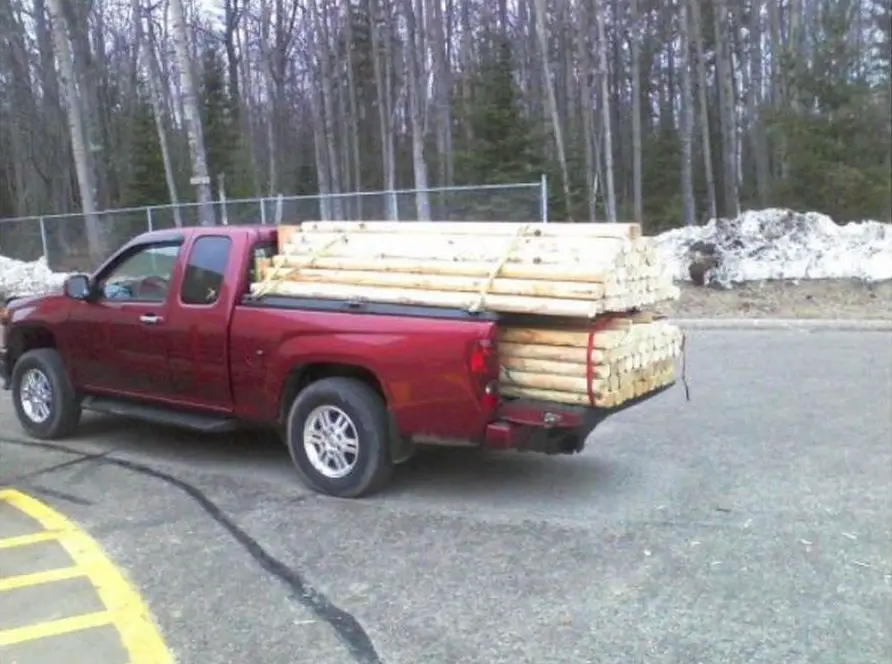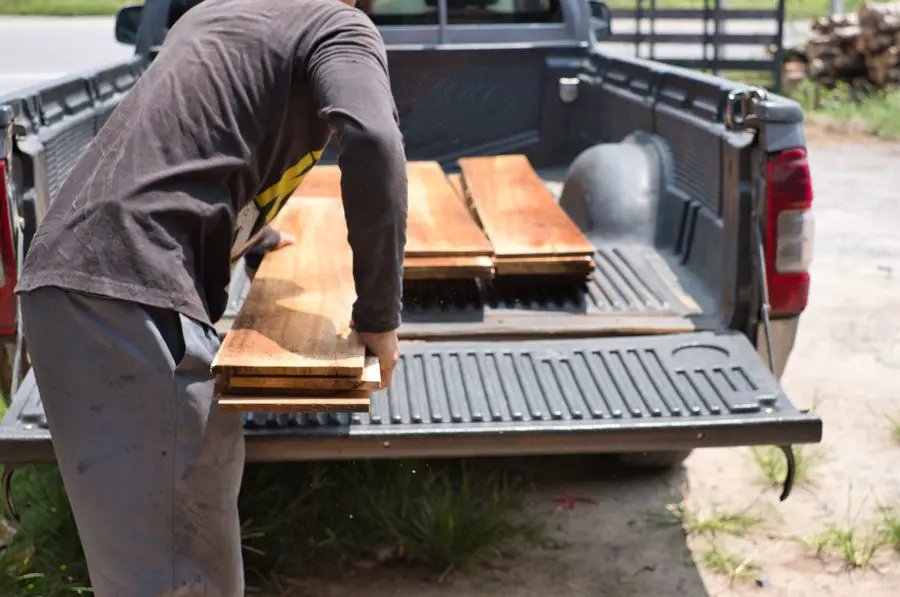According to recent stats revealed by the AAA Foundation for Traffic Safety and Management, poorly secured building materials and loads on pickup trucks are responsible for over 25,000 crashes every year. These crashes lead to almost 90 fatalities every year, which is a significant number for one country.
Contents
Pickup Truck Hacks: Transport Building Materials Like a Pro
Besides just the fatal injuries, there are also nonfatal accidents that lead to injuries, vehicle damage, road damage, and a lot more. Who is responsible for the mess created by poorly loaded building materials on your truck? Yup, you guessed it right, you.

How and Why We Created This Guide
The fatalities and accidents suffered as part of poor loading practices can be easily avoided through the right guide and practices. Before we wrote this article, we decided to get in touch with experts from the loading and moving industry who have experience loading trucks with building materials.
Then we got our hands on a Mitsubishi Triton, which is a one-of-its-kind truck in the market, and drove it around with DIY building styles to check just how safe and secure our strategies were. You can take a close look at the Mitsubishi Triton to know more about the vehicle and the features it carries.
The right tying and loading techniques should allow you to get your DIY building materials home safe without harming anyone else on the road. In this article, we mention some of the best ways to transport building materials on your pickup truck.
The techniques have been tried and tested through time to make sure that you don’t have any unwanted accidents with your truckload.
Know the Ropes and Ratchet Straps
The first rule of the process is to know where the ropes and ratchet straps are. This is an essential rule for safely securing your load on your truck. Ropes and bungee cards will work fine, but if you really want to secure your load and make sure that it does not fall off, then you should preferably use a heavy-duty 15 feet ratchet strap. The break strength of these ratchet straps is usually at 3,000 lbs.
When driving your pickup truck in the real world, you need to know that there will be emergency breaks, swerves, and a lot of bumps, which might lead to an ejected cargo if you don’t have the right ratchet straps to tie the load. All ropes twine and bungees will definitely fail if they are used in such situations.
Also, when you are going for the right tools, stay safe from wimpy straps. The heavy-duty ratchet straps you see in the market will work, depending on their width, which should be 1 and a quarter inches.
The ratchet straps should preferably be stored in a box so that you can protect them from forces of the weather, reducing their strength and rigidity. Moisture and sunlight can both have a negative impact on the tensile strength of your straps.
Wrap all Your Flimsy Material
If you have flimsy material in your pickup truck, you should preferably wrap it up to limit the damages that you suffer. Every time you run a home improvement job that involves hauling more than 10 feet long flimsy materials with sharp edges, you run the risk of damages beyond what you can control. The plastic conduits, drip edges, flashing and sharp sidings will definitely flop around the truck and damage all of your other items in the truck.
When you are at the store, you should also think of buying a good roll of stretch cling film. The film can be used to wrap all ends. If your load includes the lumbar, you can wrap it up with a cling film to improve the support.
Bundle All Long Boards
All truck owners will agree that hauling a rather elaborate load of long lumber and wood pieces can be typically difficult. The lumbar will have a significant weight when it is added together, which is why you just can’t rest it on a weak spot that won’t handle the weight.

The right way to load lumbar is to keep the heaviest loads at the bottom and then stack the lighter lumbar on top of them. Keep doing so when you have the entire load on top of each other.
Once done, you can secure the ends, the middle, and the trailing end with a ratchet strap. Remember to place the straps at the bottom before you start.
Support and Protect Your Drywalls
If you have a 6 feet long truck bed, you will have to let your tailgate down and then haul large loads of sheets. Putting down an extremely large load of 4 x 12 ft on a 6 feet bed can be particularly difficult.
The right way is to strap the load using a ratchet strap and to make sure that you don’t have any bits exposed to water, crud, or dry rock. Exposure to any of the above can damage the drywall.
Use Cargo Net for Bulky Loads
You won’t be loading drywall and extended lumber into your truck every day. There will be days when you will have to haul bundles made out of lightweight material into the truck. You might want to throw it all into the truck bed at once, but that isn’t recommended. Instead, do the drill with a cargo net.
You can buy a cargo net online or through a home center. Once you have one, you can use retainer clips to secure it on the anchor points of your bed. This is good for storage and minimizes risk on the road.
Manage Tailgate
Be careful of what you rest on your tailgate. While you can rest light loads on the tailgate, do not think that the load will stay safe because the bigger portion is in the truck. Make sure you use ratchet straps regardless.
Loading your truck in a way that minimizes accidental damage on the roads can be difficult. But, we hope we have covered the discussion in detail here, by giving you some actionable tips and techniques.
The Takeaway
Securing loads on your pickup truck isn’t just a task—it’s a crucial responsibility to ensure the safety of everyone on the road. By applying the techniques shared in this guide, such as using heavy-duty ratchet straps, wrapping flimsy materials, bundling long boards, and utilizing cargo nets, you can protect your cargo and prevent accidents or injuries.
Don’t leave safety to chance—take action today to equip yourself with the right tools and practices. Every step you take toward responsible loading helps create safer roads for all. Start implementing these tips now and make a difference!



